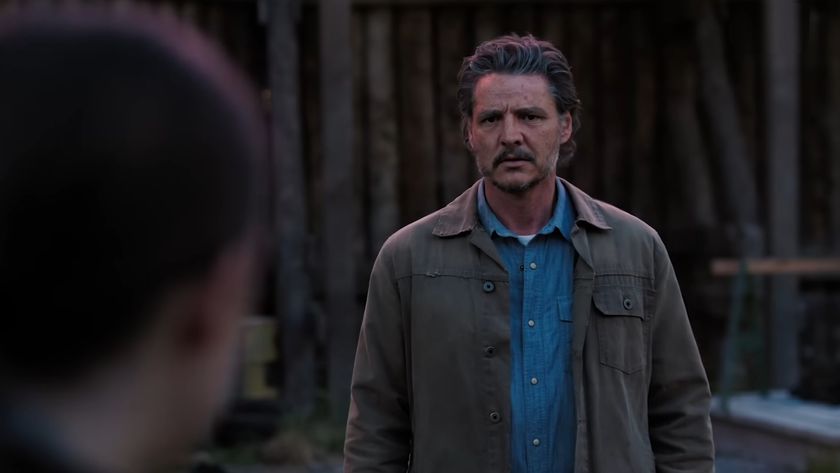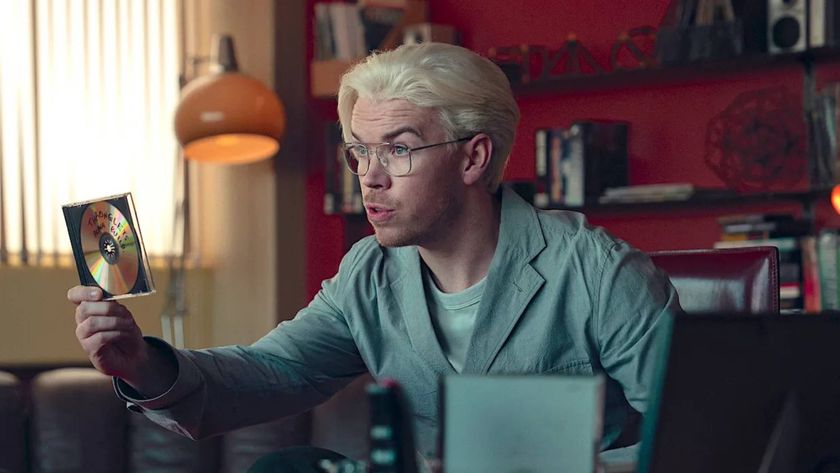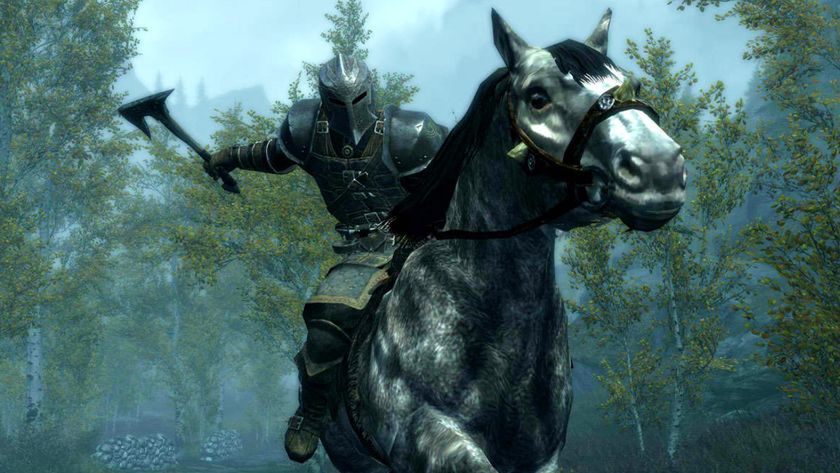Ask George Lucas - tamper with a beloved classic at your own peril. Special effects guys David LaFountaine and Dave Rossi on the other hand are two men who dared to step into the Sarlacc pit and emerged unscathed when they embarked upon an update of all three original Star Trek series. With new special effects and a new transfer making Star Trek look better than ever before, it makes you wonder what took them so long.
Some fans will undoubtedly scream "sacrilege!", but you can judge the results for yourself when Star Trek: ToS remastered premieres on new digital channel CBS Action (Sky 148 and Freesat 137), Monday 16 November. SFX spoke to Visual Effects Executive Producer LaFountaine and Line Producer Rossi to find out why they’re not just pulling a Lucas.
How did you approach adding new special effects to something so beloved by fans while staying faithful to the original?
LaFountaine: At some levels there could be a problem when you went from 1966 to contemporary special effects, they had to mesh with what went before without being jarring. We had a lot of discussions, at one point the physical tracking shot of the ship had a bump in it, which was actually a bump in the camera track, and we were talking about leaving the bump in to be absolutely faithful. But the bump was only there because of a mistake, we can fix mistakes.
Rossi: We added film grain to all the effects to match it to the film style that was used, to the chagrin of all the guys at CBS Digital, because of that very fact. You don’t want it to be so jarring coming from live action sets and actual production work to our new effects.
LaFountaine: The neat thing for me is that the show looks dramatically better than it ever looked, not just as good as it was in 1966, but way better because transfer mechanisms are better and the whole process has just improved. The final versions are just stunning.
What did you hope to add to the classic Trek experience with new special effects?
Sign up to the SFX Newsletter
Get sneak previews, exclusive competitions and details of special events each month!
LaFountaine: In particular the feeling was that the next generation of Star Trek fans were being put off by the low-tech nature of the special effects. So the hope is we can now make the show accessible to a whole other generation of fans who can enjoy the story telling and not be put off by the special effects.
What were the main hurdles you had to overcome in remastering a 40-year-old TV series?
LaFountaine: A combination of the new effects and the incredibly loyal fan base. There were questions about how far we should go. Was it the original vision? Were we going to mess it up by changing things? How much change can you make? We could do anything, but we weren’t going to have the Enterprise doing barrel rolls. Originally there were only about three shots of the ship in the series because there was a pole attached to one side of the ship. So how far do you take it and still make it look like it’s part of the original series and appropriate? We didn’t want people when they got to a new special effect to be pulled out of the story, so getting that tone right was the hardest part.
Were there any effects you felt you couldn’t touch?
Rossi: It’s not that we couldn’t touch them, rather there were certain effects we felt needed to convey the same feel as the original. In certain episodes we completely redesigned alien ships or they were ships you never saw so we were able to stretch a little. Sometimes we went back to the original script and contacted the original writers to get their original vision. So we tried to hold true to those things but would let our hair down where there was freedom to do that.
How hard was it to stay true to the original 1960s aesthetics? Was there a danger it could look kitschy?
Rossi: It’s funny, Mike Okuda (line producer) is involved in the actual space programme so when we started dealing with planets he had very definitive ideas about how he wanted them to look without going too far away from the original. Some of the planets for example were purple and we kept that purplish tint, but we had to bring everything as much into the now as possible. We’ve straddled that line where you realise something’s new but they’re not outrageous or over the top. The planets look a lot better and it fits the mood of what we were trying to do – honour what the original folks were trying to achieve.
Did you find doing effects for a classic show like this restrictive, or did you give yourselves a lot of freedom?
Rossi: Between Mike Okuda, his wife Denise (executive producer) and me it was a good balance because if somebody found themselves wanting to go too far the other two people were there to pull them back. It was difficult because there were things you wanted to change but you have to strike a delicate balance.
The Enterprise has become a design classic. Did you get a sense when you were working on this that they really knew what they were doing?
Rossi: We’re really big fans of Matt Jeffries and everything he accomplished on the show, so one of our goals was to increase the cache of shots and show people the Enterprise in a way they had never seen it before. We created hundreds of new Enterprise shots and the more we worked with it the more we realised they were either incredibly ahead of their time, or they just got lucky! The whole design aesthetic was really amazing for the time and we wanted to honour what those folks had done.
LaFountaine: But there were also discussions, for example you couldn’t tell where the photon torpedos had come from in the original and we had giant discussions about the exact point on the ship they were coming from.
Rossi: Right, we standardised where the phasers came from and their colour for the entire run of the show.
Did you try to bring a more 21st century, post-Star Wars, sensibility to the spaceship movements?
Rossi: When David first brought this to us, the first thing that popped into my head was George Lucas and how his redone effects had such an impact on the storytelling, so that was something we were definitely against. We could make the Enterprise do things that were a little more dynamic than what you saw in the original series but we still wanted them to behave like enormous ships and not have them zipping around and having crazy fire fights.
LaFountaine: It’s mostly dynamic camera moves. The camera could be put places it never could in 1966. The ship is doing the same thing, but we make the camera move in a way that makes the ship more interesting.
JJ Abrams’s movie had a similar task in updating the original Star Trek. What did you think of what they did?
Rossi: They had a very daunting task but they had a very different job than we did. Our job was to hold true to what had been there for 40 years and just make it shine a little brighter. They had the task of completely reinvigorating this franchise and coming up with something completely new and I think they succeeded in leaps and bounds.
Do you have plans to remaster the subsequent Star Trek series?
LaFountaine: It’s actually much more difficult for those because the original series was all shot on film. The subsequent shows were edited in video and the effects are video effects, so with current technology there’s no way to retransfer that stuff. We would have to find the original camera negative, re-edit the entire show and then recreate every effect from scratch. The cost prohibitions on that are pretty high, it would be the equivalent of making a new series.
Rossi: But we’re still waiting for David to make the call.
SFX Magazine is the world's number one sci-fi, fantasy, and horror magazine published by Future PLC. Established in 1995, SFX Magazine prides itself on writing for its fans, welcoming geeks, collectors, and aficionados into its readership for over 25 years. Covering films, TV shows, books, comics, games, merch, and more, SFX Magazine is published every month. If you love it, chances are we do too and you'll find it in SFX.

The Last of Us HBO showrunner says "flat out" that "I am not going to go past the game" like Game of Thrones did with George R.R. Martin's novels

New Black Mirror season 7 trailer reveals how Will Poulter's Bandersnatch character returns to the Netflix show - with a Sonic the Hedgehog namedrop











